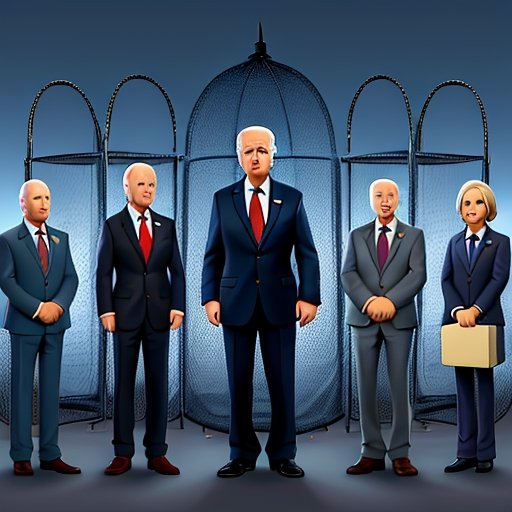As we ride into the sunset of the 2024 election season, it’s clear that the beat of the economic drum is leading the charge toward November. The rumble of rapid inflation and the infamous grocery bill have folks clutching their wallets a bit tighter these days. With only six weeks left before voters cast their ballots, economic concerns have taken center stage, overshadowing other debate-worthy topics like immigration and social issues.
Voters are doing a careful comparison, weighing Trump’s economic legacy against the policies proposed by Kamala Harris. The former President has a hefty economic resume to boast about. His tenure saw record-setting GDP growth and a significant recovery from the pandemic-induced recession. Remember the robust comeback in the job market and the days of low unemployment? Yes, those were the times when optimism was soaring.
Economic Comparison: Trump vs. Harris
| Aspect | Trump’s Legacy | Harris’s Proposals |
|---|---|---|
| Job Creation | Approximately 7 million new jobs | Focus on job market stability |
| Middle-Class Income | Increase of nearly $6,000 | Addressing income inequality |
| Key Focus | Deregulation and tax reforms | Housing affordability and taxation |
Now conducting polls is like trying to find the North Star in a hurricane. Trump’s strength lies prominently in people’s fond memories of a flourishing economy. His administration famously signed the U.S.-Mexico-Canada Agreement, giving American businesses a strong footing on the global stage. The creation of approximately 7 million new jobs, and an increase in middle-class family income by nearly $6,000 are points that supporters often highlight.
On the flip side, Harris is championing the compounding issues of housing affordability and taxation with fervor as she aims to grab the attention of the middle class by distancing herself from, well… herself. Her focus aims to resonate deeply with the everyday struggles of countless American families fed up with mounting expenses. It seems her campaign finally grasps the political weight bearing down on hardworking voters as they measure their options while listening keenly to economic promises. But it may be too late.
Trump’s Economic Strategy
As one would expect, Trump’s economic edge wasn’t built on sand. The meticulous deregulation efforts and sweeping tax reforms underpinned much of his strategy. Deregulation efforts yielded savings to the medical community, with an estimated $6.6 billion saved, easing the financial strain on both families and small businesses. The contest lies beneath this hefty history of policies favorably etched in the minds of many voters still reeling from the Biden-Harris Administration’s economic pressures.
Key Elements of Trump’s Economic Approach:
- Deregulation efforts
- Sweeping tax reforms
- Focus on job creation
- Emphasis on free-market principles
- Promotion of personal responsibility
Meanwhile, Harris attempts to waltz through the economic maze with a different tune, perhaps trying to harmonize with a middle-class depth that Trump’s symphony has already mastered. In an era defined by economic anxiety, Harris’ endeavors create a chord somewhat diminished by the heavy load of the public’s perception of her association with the sitting administration’s strategies.
Battle of Economic Visions
The battle for economic dominance is more than just a contest of records; it’s one of visions and ideologies. Trump represents a rock-solid economic foundation, a legacy predicated on hard-nosed business acumen and policy savvy. Conservative values emphasize free-market principles and personal responsibility that, for many, mark a refreshing contrast to what they perceive as bureaucratic overreach.
Trump’s campaign acknowledges the simplicity in conservative perspectives, where economic policies tightly embrace the character of prosperity through independence and the stripping away of regulatory chains. This is appealing in a time when financial constraints feel as tight as a size 10 foot in a size 5 shoe.
Conclusion
As November 5 inches closer, voters may find themselves faced with the elementary yet profound question: whose economic roadmap provides for the real, tangible relief needed and cuts through the clouds of economic disillusionment better? Past and future stand shoulder to shoulder at this crossroads, and in this economic showdown, the candidate who resonates most with the intrinsic tenets of economic empowerment will likely capture the vote of millions. The election might just pivot on these penultimate promises and recollections of past prosperity.






